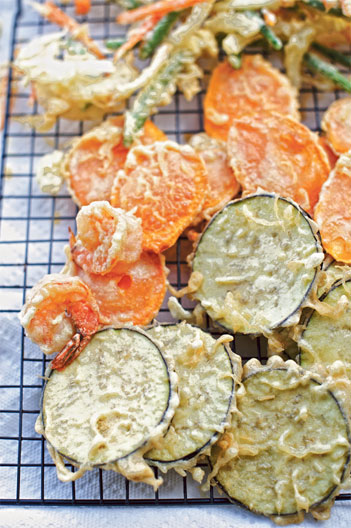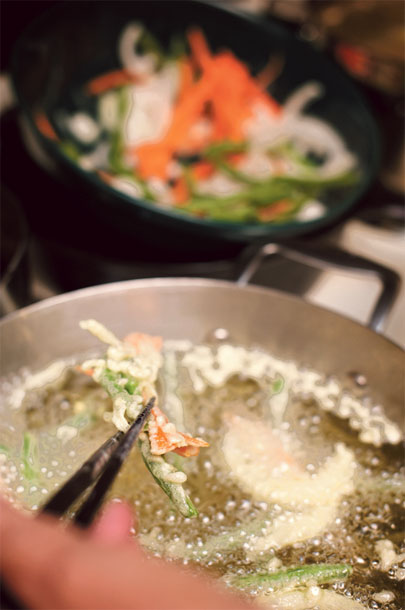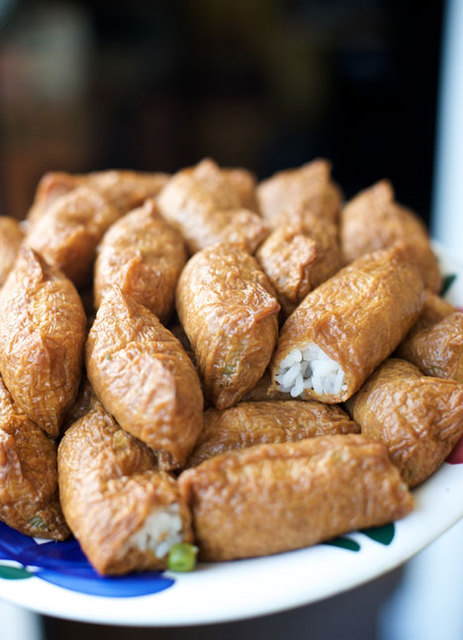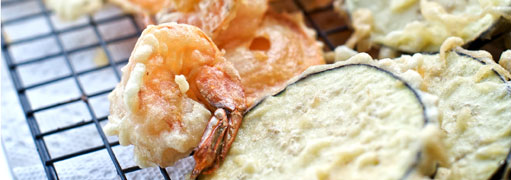“As American as apple pie” is a phrase I’ve heard forever. Yet every immigrant culture that makes up our melting pot contributes to a growing definition of American food. Such is the case with my family’s celebration of New Year’s Day.Every New Year when I was growing up my mother filled the kitchen table with an unrivaled buffet to feed our family of eight, the other Japanese family upstairs and numerous neighbors. She began several days ahead, shopping the Detroit fish market for a huge slab of fresh tuna for sashimi and fresh mackerel for miso soup. Cooking for a large family meant that she was always busy, so we kids thought nothing of it when she went into hyperdrive for a few days, though we were drafted into service—slicing, dicing and filling the numerous plates and trays that accumulated during the process.We lived in an auto industry neighborhood during the ’50s and ’60s. The local population was African-American and Polish—and us. My mom’s earlier background working at her aunt and uncle’s diner back in L.A., combined with traditional Japanese home cooking, was reflected in the eclectic menu. Many friends and neighbors weren’t familiar with or interested in eating raw fish or exotic dishes they didn’t recognize, so Mom made concessions.Every year, with few variations, the menu consisted of: 1) mackerel head miso soup; 2) varieties of sushi—nori rolls, egg rolls (crêpe-like sheets of egg rolled around sushi fillings), inarizushi (fried tofu pockets stuffed with a sushi rice, diced peas and carrots mix) and rice balls—some with a salted plum in the center; 3) char siu —slabs of roast pork marinated in shoyu, pineapple juice, sugar and garlic; 4) tempura—butterflied shrimp, eggplant, sweet potato, and a medley of onion, green beans and carrots; 5) tuna sashimi; 6) shrimp salad with tomato wedges and iceberg lettuce with mayonnaise dressing; 7) sticky chicken (chicken pieces cooked in teriyaki sauce); 8) potato salad; and 9) Kentucky Fried Chicken (original recipe).Quantities were staggering. There was enough to feed 30 to 50 people (with leftovers). Dinner officially began around mid-afternoon and continued as long as there was food. People visited throughout the day. There were no formal invitations. Everyone just knew that “T” (my mom) was cooking New Year’s dinner and showed up when they felt like it.Mom did many things that were not, strictly speaking, traditional. She included strips of char siu in the nori rolls because her brood wouldn’t eat them without meat. The potato salad and KFC were added to ensure that less adventurous eaters would have something they recognized. The shrimp salad was a favorite of my dad’s but certainly wasn’t typically Japanese.I re-created this meal last week—enough to serve the Alibi staff plus another dozen—to have photos to illustrate this article. While I didn’t have six kids ready to prep, my friend Marjorie offered to help and I gladly accepted. It all came together, minus the sticky chicken, and found eager takers.I think of this meal as a perfect New Year’s tribute—an homage to my mom, an indefatigable and giving human being—and as a symbol of the nurturing spirit that creates community out of chaos. Happy New Year’s, all!
Send your restaurant tips, food events and other delicious tidbits to food@alibi.com














